ZStack Cloud Platform
Single Server, Free Trial for One Year
As VMware virtualization replacement becomes a trend domestically, the smooth and efficient migration of services from VMware platforms to IT innovation virtualization cloud platforms remains a critical consideration for users during infrastructure selection.
Terms like V2V, P2V, live migration, and cold migration often sound deceptively simple to IT professionals, as if a single tool could suffice. However, the term “migration” implied by users typically encompasses multiple dimensions: service migration, application migration, database migration, and full-system migration. In practice, migration involves highly complex factors, such as clarifying dependencies between business virtual machines, planning application downtime and recovery, scheduling service interruptions within maintenance windows, coordinating network resources, evaluating application environments, researching migration methods, conducting validation tests, and preparing rollback and contingency plans. Any oversight or inadequacy in these details may lead to severe production incidents.
For infrastructure professionals, discussions about “migration” should first prioritize business continuity assurance, followed by project management essentials such as organization, research, methodology, and planning. Tools serve only as supplementary enablers.
As an infrastructure software vendor serving 3,000+ government and enterprise users, ZStack has accumulated extensive migration experience. With the growing wave of VMware replacements, migration has become a recurring topic in product consultations with customers and partners. This article shares our insights and best practices to comprehensively address migration-related concerns.
As an infrastructure software provider, even a simple POC requires meticulous attention before migration begins, as migration inherently carries risks. Insufficient planning and research often lead to high failure rates or “predictable surprises” such as IP conflicts or bandwidth contention, jeopardizing business continuity. Our migration implementation follows a structured project management workflow:

Migration tools are merely one component—strategy, processes, and methodology are equally indispensable. Avoid over-reliance on tools alone.
VMware, Hyper-V, and PVE have dominated domestic virtualization markets with their compatibility and performance. However, rising demand for localized solutions and VMware’s subscription model shifts have driven many users toward self-developed Chinese virtualization/cloud platforms. ZStack Cloud and ZStack ZSphere have earned trust through robust features, exceptional performance, and dedicated service.
ZStack Cloud adheres to the 4S private cloud standard, offering lightweight deployment, open-source core, and versatile editions to meet diverse needs. It delivers advanced private cloud capabilities, elastic bare metal management, enterprise administration, and high-performance load balancing.
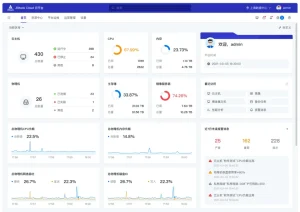
ZStack Cloud
ZStack ZSphere provides a VMware vSphere-aligned virtualization experience, making it the ideal choice for localized data center infrastructure replacement.

ZStack ZSphere
Full-system migration remains the primary method for virtualized environments (occasionally supplemented by database or filesystem migration). Challenges include diverse OS versions, non-standard storage/virtualization configurations, driver mismatches for non-standard CPUs/NICs, and storage/network bottlenecks—often requiring hands-on expertise.
To enable efficient and secure migration to ZStack Cloud or ZStack ZSphere, we offer ZStack ZMigrate. Designed from lessons learned across numerous migration cases, it mitigates common pitfalls with the following advantages:
Applicable scenarios:
The software design of ZStack ZMigrate adopts a flexible architecture to better adapt to various complex on-site environments. The main architectural components are as follows:
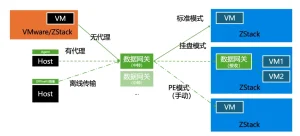
All software functionalities stem from real-world scenarios. ZMigrate’s use cases fall into three categories:
Most users migrate from existing virtualization/cloud platforms (e.g., VMware) to ZStack. Using VMware vSphere APIs (agentless, recommended), ZMigrate leverages VADP+CBT technology to replicate VMware VM data through encrypted channels to ZStack target VMs (automatically created via ZStack APIs using BootImage). When cutover conditions are met, ZMigrate stops replication, switches the target VM’s boot disk to the source system disk, and starts the ZStack VM to complete migration.
ZMigrate also supports reverse migration from ZStack back to VMware for rollback scenarios.
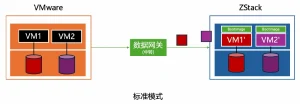
Used when maintenance windows are uncertain or target IP addresses are unavailable. This mode requires only one IP to copy source data first, with cutover performed after target IPs are ready. Similar to standard mode, the target gateway mounts multiple VM disks to store replicated data. During cutover, ZMigrate automatically creates VMs and attaches the pre-copied disks.

For legacy systems (e.g., unmaintained embedded devices, industrial PCs) requiring continuity, PE mode uses an OfflineKit image to boot the source, copy data offline to target VMs, and perform cutover. Agent-based replication is optional for systems without downtime windows but is discouraged for fragile legacy environments to avoid modifications.
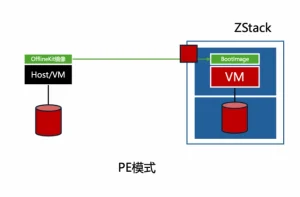
Using virtualization platform migration as an example:
After deploying ZStack Cloud/ZSphere, create a ZMigrate management node VM (using Server_gateway image) as both manager and data gateway. For large-scale online migrations, consider adding a dedicated migration network.

Action: Add Data Gateway
To enable VMware-to-ZStack rollback, define both VMware and ZStack as targets:

Action: Add VMware Target

Action: Add ZStack Cloud Target
After configuring targets and gateways, select source hosts (e.g., a VMware Windows 2019 VM) to create replication tasks.

Action: Add Source Host

Action: Create Sync Task

Status: Target replication objects created; data replication started
Adjust incremental sync frequency post-initial replication to minimize RPO for live migrations.
ZMigrate takes into consideration that most migration projects involve a migration testing phase, therefore providing two switchover options to address the following scenarios:
Immediate switchover: Typically implemented during the final stages of a project. After the project team confirms readiness for cutover, this action will terminate data synchronization from the source machine to the target machine, while simultaneously activating the target machine according to predefined configurations. The business unit can then proceed with subsequent application cutover operations.
Replica disk testing: Primarily used during mid-project testing phases. When the project team conducts migration testing, this option creates a virtual machine replica based on the current snapshot without terminating data synchronization between source and target machines. This replica is used for validation by the business unit.

Action: Switchover method
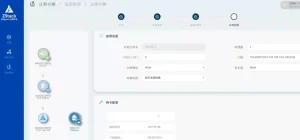
Action: Confirm final production configuration of virtual machines
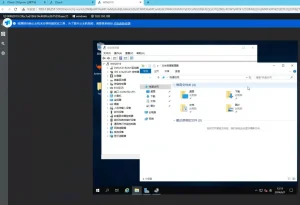
Status: Confirm successful data migration
Migration is a critical undertaking as it directly impacts business continuity. It must be meticulously managed as a formal project – neither omitting essential steps nor making arbitrary decisions based on intuition. While tools can simplify migration processes, comprehensive project management remains indispensable. Especially in the current trend of domestic innovation and VMware replacement, migration incidents have become one of the primary factors affecting business continuity. We must approach every migration with utmost professionalism to maintain customer trust!